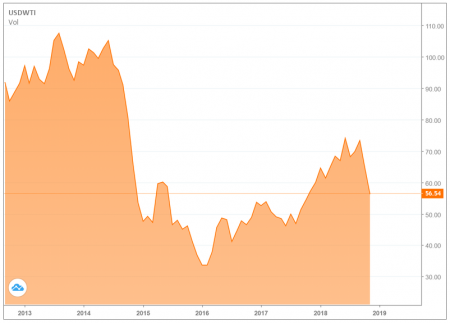Jamaica is currently enjoying the longest stretch of low inflation from November last year for some time, with the latest reading on inflation being 0.1 percent rise in March this year with an average of 0.08 percent per month or less than one percent per annum. Over the past two years and three months, the rate peaked at 2.3 percent in September 2021.
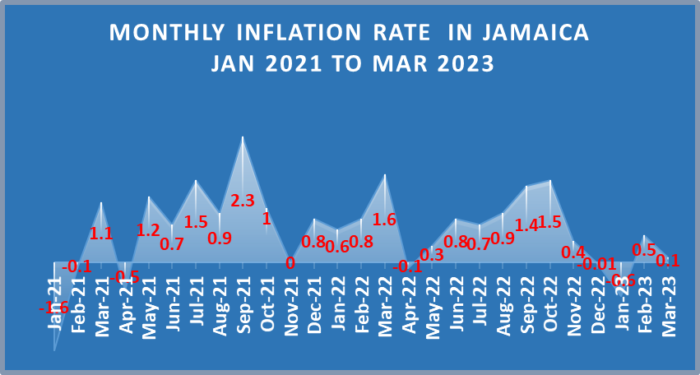
Monthly inflation in Jamaica 2021 to 2023
BOJ is wrong as inflation keeps falling
Jamaica’s central bank (BOJ) was granted independence in 2021 but they seem to be making a mess of it. For much of last year they fiddled around telling the country that inflation was well under control and that it would remain within the band of 4-6 percent for two years, that’s before they found out that it wasn’t.
 They informed the Ministry of Finance in April last year, why they could not increase interest rates as that would trim economic growth. In May, they made an erroneous statement that inflation was still getting higher when the underlying data was suggesting that it was improving and close to their target.
They informed the Ministry of Finance in April last year, why they could not increase interest rates as that would trim economic growth. In May, they made an erroneous statement that inflation was still getting higher when the underlying data was suggesting that it was improving and close to their target.
According to BOJ inflation was 11.8 percent in April and would get worse over the next two months.
ICInsider.com advised that they were wrong and that inflation was running close to the target since October and therefore was not getting worse but was improving.
According to the BOJ after its meetings held on 12, 13 and 18 of May 2022, “the Monetary Policy Committee (MPC) noted that inflation at April 2022 of 11.8 percent was higher than the outturn at March 2022 and represented the ninth consecutive month that inflation has been above the Bank’s target range of 4.0 to 6.0 percent. While inflation is forecasted to rise further over the next two months, the Bank forecasts inflation to fall in the second half of the year, consistent with consensus forecast for a fall in commodity prices. This means that the public should start to see lower inflation rates each month, beginning in the second half of 2022, as long as tensions between Russia and Ukraine do not escalate and inflation among Jamaica’s trading partners falls.”
The latest data from Statin is once more confirming what we stated last month and casting serious doubts on the authority of the central bank. Statin’s latest reading on inflation is 0.3 percent for May with the year or year rate down to 10.8 percent, which is down 100 basis points from the April reading. The monthly rate for May is the lowest since November last year with zero inflation and April with negative 0.5.
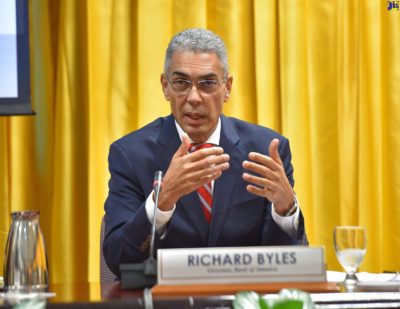 Since October last year, some seven months ago even before the interest rate hikes took effect, inflation was just over 6.4 percent per annum. With an average of 0.535 percent per month. For the period from December last year, the average rate is 0.547 percent per month, but since January it is running at 5.46 percent per annum.
Since October last year, some seven months ago even before the interest rate hikes took effect, inflation was just over 6.4 percent per annum. With an average of 0.535 percent per month. For the period from December last year, the average rate is 0.547 percent per month, but since January it is running at 5.46 percent per annum.
The rate is moderating, but the country is not out of the woods as yet. There are some hopeful signs for the coming months. The rate of exchange of the Jamaica dollar is now officially J$153.45 to the US dollar compared to around $156 up recently, this will cut the cost of imports and will contribute in a major way to cutting imported inflation. The recent increase in interest rates will also slow down economic activity.
The inflation trend since October last year, suggests BOJ has overdone the interest rate hike and the rate should start the downward trek before the end of the year.
Jamaica’s inflation down considerably
Oil prices came back from the pre-Ukrainian war prices easing inflation in Jamaica in April, with the country posting the lowest inflation rate since April last year. The year over year inflation rate is up to 11.8 percent according to Statin’s latest read on inflation.

Increased fuel prices added to inflation.
The release from the Statistical Institute of Jamaica would lead to a view that despite the negative 0.1 percent for April 2022, that inflation is still rising. That of course is false. Over the past seven months, inflation is trending well within the Bank of Jamaica’s range of 4 to 6 percent, at 5.10 percent annualised, with March being the worse month with a 1.6 percent increase, fueled a lot by the events associated with the Ukrainian war, but for that, the rate may well be lower than it currently sits.
The trend is in keeping with ICInsider.com report earlier this year, suggesting that inflation was well in control from the latter part of 2021.
The reduction in inflation in April according to the release by Statin, “was occasioned by electricity rates, which mainly resulted from lower fuel charges.”
The above decline was tempered by Statin states, by the 1.1 percent increase for the group ‘Water Supply and Miscellaneous Services Relating to the Dwelling due to increased water and sewage rates. Food and Non-Alcoholic Beverages’, increased by 0.5 percent, as most classes within the division recorded higher inflation rates. There were reduced prices for Vegetables, tubers, plantains, cooking bananas, pulses, Fruit and nuts.
Big inflation spike in 2019
The Statistical Institute of Jamaica (STATIN) reported that the annual inflation rate in Jamaica to December 2019, was 6.2 percent, a sharp increase from inflation over the last four years.
 According to data from the Statin, inflation in 2018 was 2.4 percent, down from 5.2 percent in 2017. In 2016 the inflation rate ended at 1.7 percent and 3.7 percent in 2015, 6.4 in 2014 and 9.7 percent in 2013.
According to data from the Statin, inflation in 2018 was 2.4 percent, down from 5.2 percent in 2017. In 2016 the inflation rate ended at 1.7 percent and 3.7 percent in 2015, 6.4 in 2014 and 9.7 percent in 2013.
Jamaica’s Central Bank, in response to the sharp rise in the inflation for the year, stated, the outturn “represents a sharp jump when compared with the 3.4 percent recorded in September 2019. This inflation outturn was not anticipated and was higher than the Bank of Jamaica’s target of 4.0 to 6.0 percent.”
The release from Bank of Jamaica, stated, “the higher inflation rate was primarily influenced by faster increases in food and energy-related prices in the consumer price index (CPI). The heavily weighted Food & Non-Alcoholic Beverages division of the CPI increased over the year to December by 10.7 percent, when compared with 6.7 percent in September 2019. This was primarily related to higher prices for vegetables and starchy foods, the consequence of adverse weather conditions (drought followed by heavy rains) that affected the Island between June and October 2019.
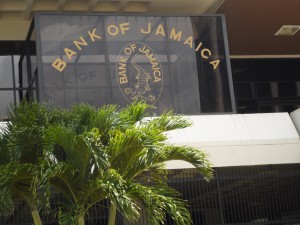
BOJ interest cuts overnight rate.
There was also news of crop-related diseases affecting some items. Housing, Water, Electricity, Gas & Other Fuels reflected higher rates for electricity and water, which was partly related to increases in international oil prices in the December 2019 quarter. This division increased over the year to December to 1.5 percent, compared with a decline of 3.2 percent in September 2019.”
The release continues, “despite the higher headline inflation, underlying inflation, which excludes the immediate influence of agriculture and energy prices, remained stable and below 3.0 percent. At the end of December 2019, the annual rate for this measure was 2.9 percent, which was unchanged compared with the rate in September 2019. This underscores that the Jamaican economy continues to reflect some slack with economic growth below its potential. It also highlights that the jump in inflation is likely to be temporary as expected tempered movements in agricultural prices dampen inflation over the next three to six months.”
Jamaica’s inflation up 0.8% in March
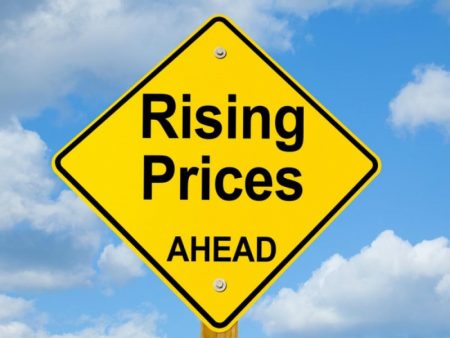 Inflation in Jamaica rose 0.8 percent in March and brings the year to 0.7 percent date data released by the Statistical Institute of Jamaica (STATIN) shows and the fiscal year inflation to 3.4 percent.
Inflation in Jamaica rose 0.8 percent in March and brings the year to 0.7 percent date data released by the Statistical Institute of Jamaica (STATIN) shows and the fiscal year inflation to 3.4 percent.
According to Statin, the movement was mainly attributable to a fall of 0.9 percent in the index for the heaviest weighted division Food and Non-Alcoholic Beverages and a 1.5 percent rise in the Housing, Water, Electricity, Gas and Other Fuels division at resulted from a 2.7 percent increase in the group ‘Electricity, Gas and Other Fuels’. Also contributing to March’s inflation rate was an increase of 1.1 percent in the index for the ‘Transport’ division. This was mainly attributable to the rise in petrol prices.
No Inflation in Jamaica
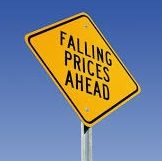 With 5 months having elapse for 2018 data put out by the Statistical Institute of Jamaica (STATIN) show Jamaica still having deflation of 0.7 percent, the same as in April.
With 5 months having elapse for 2018 data put out by the Statistical Institute of Jamaica (STATIN) show Jamaica still having deflation of 0.7 percent, the same as in April.
According to STATIN, the All Jamaica Consumer Price Index recorded a negligible movement for May 2018, The main contributor to this movement was the 0.2 percent fall in the index for the heaviest weighted division ‘Food and Non-Alcoholic Beverages, due mainly to lower prices for agricultural produce, especially vegetables such as cabbage, carrot, sweet pepper, tomato and lettuce.
Tempering the declining items was a 0.2 per cent increase in ‘Housing, Water, Electricity, Gas and Other Fuels’, primarily resulting from higher electricity rates, offset by a reduction in water and sewage rates. May out turn brings inflation in the past twelve months to May to was 3.1 percent.
Food prices pressure November’s inflation

Food category was main contributor to November’s inflation.
According to STATIN, the “movement was mainly the result of a 1.2 percent rise in the index for the heaviest weighted division Food & Non-Alcoholic Beverages. Transportation moved up by 1 percent due to higher petrol prices and airfares, and Education increasing by 0.2 per cent, as a result of an increase in the cost of CSEC examination fees. The impact of the month’s inflation was however tempered by the 0.9 percent fall in the index for the division ‘Housing, Water, Electricity, Gas and Other Fuels, with lower cost for electricity being the main contributing factor.”
Year-to-date inflation is 4.6 percent, while inflation for the past 12 months is up 4.9 percent and the fiscal year-to-date movement was 3.6 per cent.
The relatively large revaluation of the Jamaican dollar against the US dollar since September, will have a moderating impact on inflation going forward.
Taxes push Jamaica’s April inflation

Increased taxes pushed inflation in April.
Increased taxation on fuel, cigarettes and pure alcohol and increase motor vehicle license were mostly responsible for the 0.3 percent increase in Jamaica’s inflation for April as measured by the Consumer Price Index.
The calendar year-to-date inflation amounts 1.3 percent, while inflation rate since April 2016 is 4.8 percent.
This upward movement was mainly due to the divisions, Transport recording an increase of 1.7 percent and the highest weighted division Food and Non-Alcoholic Beverages moving up by 0.1 percent. The upward movement in the Transport division was due mainly to the increase in the Special Consumption Tax levied on petrol. While increased consumption tax pushed inflation by of 0.9 percent in the Alcoholic Beverages and Tobacco division.
The overall inflation rate was tempered by the decline of 0.2 percent in the division Housing, Water, Electricity, Gas and Other Fuels, due to lower rates for electricity, resulting in a fall of 0.5 percent for the group Electricity, Gas and Other Fuels.
